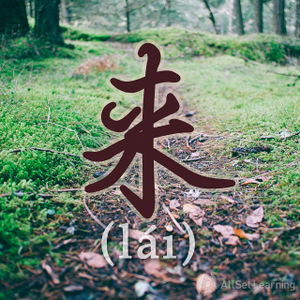Difference between revisions of "Using "lai" to connect two verb phrases"
| Line 36: | Line 36: | ||
{{Similar|Expressing purpose with "weile"}} | {{Similar|Expressing purpose with "weile"}} | ||
{{Similar|Facilitating an Outcome with "yibian"}} | {{Similar|Facilitating an Outcome with "yibian"}} | ||
| + | {{Similar|Expressing purpose with "haorang"}} | ||
{{Used for|Exclaiming}} | {{Used for|Exclaiming}} | ||
{{POS|Conjunctions}} | {{POS|Conjunctions}} | ||
{{Used for|Expressing Purpose}} | {{Used for|Expressing Purpose}} | ||
{{Translation|to}} | {{Translation|to}} | ||
Revision as of 06:42, 20 June 2013
| This article is a stub. Editors can help the Chinese Grammar Wiki by expanding it. |
-
Level
-
Similar to
-
Used for
-
Keywords
The word 来 (lái) can be used to connect two verb phrases, relating the actions to each other. It can be translated as "in order to" or "so that" and it can help in explaining reasoning.
Structure
Connecting two verb phrases is very easy. All you need to do is place 来 in between them. This has the meaning of doing the first verb to achieve the second verb. Often used with words expressing a way or a method, e.g. "通过""用"
通过/用 + Verb Phrase 1 + 来 + Verb Phrase 2
Examples
- 用 这 种 方法 来 赚钱,真 丢人。Using this method to earn money can hurt your reputation.
- 我们 可以 通过 打折 来 吸引 顾客。We could have a sale in order to attract customers.
- 你 只能 通过 自己 努力 来 找 到 好 工作。You must work hard in order to find a good job.
See Also
Sources and Further Reading
- Integrated Chinese: Level 2, Part 1 (pp. 268) →buy



